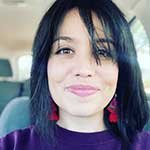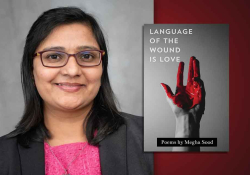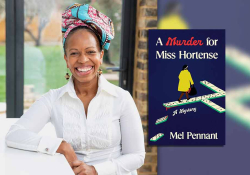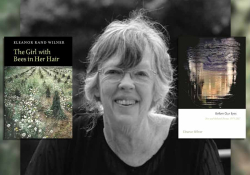Walking in Empty: A Conversation with Poet Juan Felipe Herrera
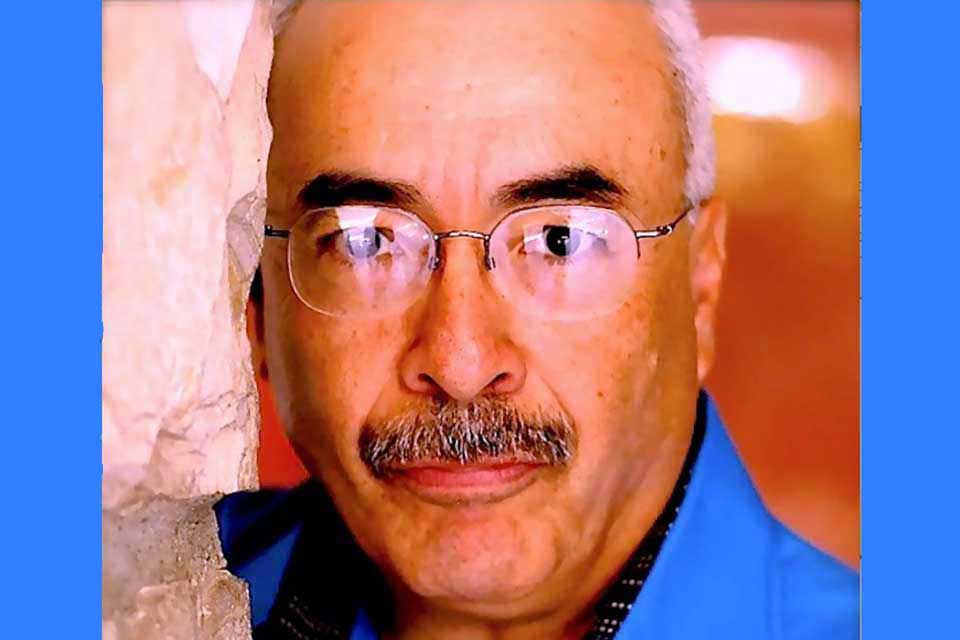
For the 44th Annual Writers Week, the University of California, Riverside department of Creative Writing, in partnership with the LA Review of Books, honored three US Poets Laureate with Lifetime Achievement Awards: Rita Dove (1993–95), Juan Felipe Herrera (2015–16), and Joy Harjo (2019–current). As part of honoring these poetry luminaries, three visionaries representing barrier breakage in their page, stage, and community work, Crystal AC Salas, third-year MFA student at UCR, interviewed each laureate over phone and Zoom in commemoration of this occasion.
To celebrate the twenty-fifth anniversary of National Poetry Month, in the second of this series of three conversations, Juan Felipe Herrera discusses his role as poet laureate, the creative abilities of children and young people, and the importance of true connection in poetry.
Crystal AC Salas: Who would you say are your ancestors in your legacy of poet as ambassador, community organizer, and activist? How are these ancestors present in your work with the public?
Juan Felipe Herrera: I would say, to begin, it would have to be my parents, since all we did was just be together—the three of us traveling on the migrant trail. That was a very closed, even though Big Sky, yet closed-on-the-outside-of-everything world. Maybe except for when we went to buy groceries, we were in Grocery Society world. But otherwise, we were on the other side of the highway at the edge of the city. I was just going from here to there at a very early age.
All that close contact and storytelling—my mother, really, consciously, wanted to be my teacher. And that involved a lot of talk and conversations about who my family was. She had an old album that was passed on from my grandmother, Juanita, who used to receive all the photos from our parents and grandparents and keep them all in an album. And then, my mother inherited all of these photos. It was one of those five-and-dime-store albums with a red plastic leather-like cover with the black felt paper inside and the brownie photos. All photos from the late 1800s of my grandmother, my great-grandmother, and my grandfather. It started there and then it just moved on up . . . to the 1930s, ’40s, ’50s, and that’s kind of where it ends.
Each photo had a story, and she’d open it up and tell me, “Oh mira, this! This is tú abuelita Juanita! And she was very stern. And she didn’t want me to go to school after the third grade because she caught me stealing candy!” These were heavy stories. And then [my mother] she would point to another and say, “And this is me, I wanted to be a dancer.” She’d pull out whatever she could find to look like a gypsy dancer. And she did look like one—I think that’s really who she was. “And yet,” she said, “I wasn’t allowed to. I wasn’t allowed to go to join the local barrio theater.”
The vaudeville-style theaters were coming out in the 1930s in El Paso–Juarez. They were the big thing as of 1930 because the big radio stations were installed in the late 1920s in Juarez–El Paso. So, all of a sudden there were auditions for whoever wanted to be involved. She wanted to do that with all her heart, body, and soul, but she was held back because she was a woman. And that’s it. A big, old line was drawn. That was her story. And it really got to me. So then, in a way, I waged a struggle. I waged a little war with myself and with society. I was going to get up there, one way or another, and somehow, along the way, I was going to bring her into the stories.
My father, too, but my father was always traveling—traveling fathers—he would be out for a year, a long time. But he had stories to tell. Or just observations. When we’re children we observe everything. When we’re teenagers, we feel and hear and listen. Even though we don’t look like it, we’re taking it all in. So, I took everything in. And then there’s others—the 1950s and ’60s we went from Elvis Presley to Jimi Hendrix. 1956 to 1968—that’s a lot of crazy, beautiful, wild music! I would listen to all of it all the time.
And the social movements—that’s kind of a collective ancestor. As students, we were all involved. It was either the Campesino movement, the LatinX movement, the Chicano movement, the gay rights movement, the women’s liberation movement, the American Indian Movement, and then the global student movements, throughout Latin America and the world. You could just flip a coin and find a movement!
Salas: What was your understanding of the US poet laureate position prior to your appointment, and how did this evolve over your term? Furthermore, could you speak to your process of approaching your central project of your laureateship? What surprised you to learn about the accessibility of resources for poetry programming?
Herrera: I didn’t research the position much beforehand. I just felt good about it, and I knew that I was going to represent everyone in the United States, and I was going to promote literature and poetry, and my natural inclination is always to reach out to our communities of color and Latinas, Latinos, and children. That’s just what I had going in, that was in my heart, and I was just gonna let it work out! That’s what has usually been my whole life experience going into a new space—not knowing what it is and then discovering it and moving through it.
When I was there the first time, I got an important visit. The Library of Congress has various divisions—the African American division, the Hispanic division, as it’s called, the Asian division, the Folklife Center, the Rare Books division, and the Princeton photographs division and on and on. . . . They all have librarians and they’re divisions, but they’re really microlibraries that collect those materials and have collected them through time. So, the head librarian of the Hispanic division comes walking in with a couple of our staff librarians as well, and she walks right up to me, she comes through the door, and there I am in this elegant office with antique furniture—emerald green and windows toward the big lawn, the Mall, and other buildings in the area. And she says, very softly and slowly, with teary eyes: “We’ve been waiting for you.”
That was a big ol’ bell that she hit, you know? Well, I don’t think it was me, Juan Felipe Herrera, but it was just this moment of having a Latino be the poet laureate of the United States and that it was time to come together.
I found out that the Hispanic division has a lot of beautiful resources, materials, recordings, photographs, and ancient books. One thing I got to see was a special edition of one of Lorca’s chapbooks, España en el corazón. It was made out of the uniforms of soldiers. They had wanted to give him a gift, so they tore up some of their clothes. They mashed it and made paper pulp out of it, and they made the pages and then imprinted the letters of these poems and folded it into a nice cover. They gave it to him because he had served some time with them and supported the cause against Franco.
If you’re at the biggest cafeteria in the world, where you’ve never been, and when you’ve been hungry all your life, you’re going to create some projects!
I did four or five projects because, well, if you’re at the biggest cafeteria in the world, where you’ve never been, and when you’ve been hungry all your life, you’re going to create some projects! The first one was Casa de Colores, which was for everybody. I wanted everyone to publish poetry. I wanted for their voices to be heard in whatever manner they wanted to write, what they wanted to write, and whatever language they wanted to write without any editor that’s going to say: “This is no good” or “It’s not worthy. You have to go to the university for fifty years and then we’ll look at your poetry!” I wanted that to happen, so then we put out a call. Casa de Colores contained “La Familia,” which was this project of occasional themes, and people would submit poetry regarding that theme, like “Community” and a number of other themes that I presented to the nation. Many poems came in. Some of them were from adult education classrooms. And some were in Spanish, a little in German, a little in Italian, a little in Portuguese. So that was “La Familia”—it was a continuous scroll. And then another thing about Casa de Colores was “El Jardin,” which had presentations that I did about the Library of Congress itself with the head librarian.
Next, I did The Technicolor Adventures of Catalina Neon. This was for second-graders to write, to inspire them to work with a teacher and librarian to give me ideas and writing for this story that was blank and going to be called The Technicolor Adventures of Catalina Neon and Her Puppy Tortilla. They sent a lot of stuff, and then I would tweak it around. And it turned out to be a wild story!
And then the workshops with migrant women, migrant students, and teachers who teach migrant students—that was the most moving. Their stories had to do with ICE, had to do with parents, had to do with dropping out of school, even though they were straight-A students because they had to go to work, because their parents didn’t want to get caught, and they wanted to protect the family and get some income. Migrant women came to the readings on a couple of occasions and, you know, they were in estilos cómodos like at home, like en nuestras casas; they weren’t all “dooded-up.” I mean, why, right? It’s a poetry reading!
They didn’t say much. Because it was new for them, too, most likely. So, I had a chance to speak with them—to me, it was like it was a code language—I said: “Cómo están y cómo están las cosas?” And that meant: “What’s going on in your life and what’s happening in your community?” Because it was tough times. And they would say, “Allá le vamos” (We’re surviving). And that was enough to say a lot right there. We didn’t have to get into a deep conversation. And what also said it all was that they were there. I mean, why come to a poetry reading? But they came. I learned from everyone that came to the readings.
Salas: After Amanda Gorman’s riveting performance at the presidential inauguration, many folks seemed shocked that such a young person could write and perform with such powerful articulation. Personally, as someone who works with youth, while I was in awe of her performance, I was not at all surprised by the keenness of vision that has arrived at her young age. What were some of your favorite insights to arise about the potential of poetry that came from working with children and younger poets?
Children and younger poets, they have such a wide lens.
Herrera: Children and younger poets, they have such a wide lens. On the road, as laureate, I had a group of second- and third-graders. And I said: “Let’s talk about some things you’re interested in, shall we? Let’s solve some world problems. . . . Would you like to do that?” And they’d say, “Yeah! We wanna solve some world problems!” And I’d say, “Great! What kind of world problems do you wanna solve?” And then they gave me a list, and it was a serious list; it wasn’t how to make candy or anything! They put some big stuff up on the board.
So, I said, “Let’s put that aside. Now how about a shape or something so we can put those world problems inside. You know, like a circle but not a circle. You guys come up with a shape and we’ll go at it.” And a second-grader, a little tiny, microscopic second-grader, she raises her hand and I say, “Yes? What shape should I put up there?” She says: “An infinity-sided cube!” So, I had the chalk in my hand and I go: “Wow . . . you know what, okay. Tell you what, let’s have you do it!” Cause I knew they were going to be able to do it. In my head, it was kind of like an Einstein Cube. Remember that? Zero volume, each side had zero volume, yet it was a cube? That’s what her idea sounded like to me.
So, they came up and they decided to go boys first and girls second. They decided to split themselves. Boys went over here, and girls went over there. And then the girls did these sea anemone shapes, crisscrossing into each other, and I said, “Wow! Jeez, that’s incredible!” And the boys just did little triangles and rectangles—one day males will advance! And they began to put up the kind of problems they wanted to solve, and then they selected one [from the list]. And they did! And they came up with amazing results! And I said, “You did it! This is great!”
I enjoy working with children, seeing how they think and how flexible their minds are, how open and creative they are. And youth as well. They jump up and do spoken-word, and they’re incredible. It’s always a whole new thing. It’s reality, rhythm, and joy at the same time. The rhythms are incredible, and the lines are not an issue. The reality is, you know, the hard realities, the tough realities people rarely write about or know how to write about. The language is very direct, which is great. And the joy is there and the performance and bringing it out and getting all that electrical response from the audience. There is a lot of bravery and courage involved. I look to them [the youth] as teachers. I think of Amanda Gorman as having presented a new model of writing. Because it was so magnetic. We all loved what she said, and how she said it. It was like drinking a glass of water. A glass of clear, clear, clear water.
I think of Amanda Gorman as having presented a new model of writing.
Salas: We are in a time of renewed investment in activism, where we are also hopefully asking about the ethics of these gestures and our positionalities in offering service in ways that are sensitive to and even desired by the communities we seek to uplift. As a literary activist and ambassador, how do you stay checked in with that concern? What questions do you ask yourself?
Herrera: I’m such a traveler—since I was a child moving from one place to another place. I feel a lot for everyone; I believe in everyone finding happiness and being accepted and acknowledged with respect at the core. There’s other things—there’s food. There’s clothes, of course, and there’s house, and there’s having everything everyone else has. I want everyone to have that. But, on a deeper level, I want everyone not to suffer. I want to help. I want to solve. I want to participate in ending that suffering, especially with people that I know. I know I may not know their name, but I know them. Even though times have changed since I was a child, time has stood still. Remember I said I lived outside the main road on the edge of town, by the open fields? And because you’re in a trailer, you’re kind of just occupying a little space there. To live like that is to stop there, and maybe you stay there for a little while, I don’t know—maybe two, three, four weeks—and then you move on. So, life is hard. So, with that vision and that cause, I don’t really feel like I’m intruding. I’m not like, “Oh, hey, hey! Everybody needs to learn English.”
I just meet people with open arms. I meet people openly; I don’t meet people to do something. I don’t meet people to ask for something. I don’t meet people to instill something. I don’t meet people to agree with me in any manner whatsoever. So that’s the key: to be sincere and to be as extremely open as you can, because everyone has a different point of view. But that’s what guides me: kindness. And wanting to be totally, totally available to people, especially Indigenous Latinos, Latinas, and Méxicano/as, Centroamericano/as, Latin American, African American—everybody!
I know some people have been on the outside like I’ve been. And that’s all, you know. I keep ideology and doctrine outside of my relationship with human beings.
I keep ideology and doctrine outside of my relationship with human beings.
Salas: The concept of a public mandate for an arts ambassador on a county, state, and/or national level has always fascinated me within our nation—it’s a notable contrast in a culture in which to be an American artist is to constantly have the societal legitimacy of one’s artmaking under siege. Furthermore, to be a BIPOC artist is often to endure the added complexity of the dominant culture’s dismissal of one’s personhood and lived experience alongside their art. So, the national and institutional endorsement of a poet as a necessary ambassador within the republic has always made me curious about both the joys and the precarities of the post. How did/do you reconcile the promise of this post within the devaluation of arts and humanities within our racist and capitalistic culture?
Herrera: You get some funny questions as poet laureate sometimes . . . sometimes they’re kind of cruddy questions. Once—I think it was in an art museum—a gentlemen who was part of the museum, I think, came up to me and asked me: “Can you name any Victorian poets?”
So, I was kind of put to the test, like in my head: “Maybe you’re not good enough to be a poet laureate?” You meet a little bit of everything, so you gotta listen to it and reflect on it. It’s part of the prism of the nation. You know, not all of them are Chicanas wearing a liberation button! Not all of them are doing spoken-word! Or, like César Vallejo-ish poetry by a Latino. And on, right? So, we learn quite a bit, if we’re open.
We have to be open. Once, after a reading, a young man, a student at an alternative high school, he was last in the room, came in with his teacher and another student. And I noticed that they weren’t going to be able to afford the fifteen-dollar book. So I said, “It’s okay! It’s on me!” So they both got a book, Notes on the Assemblage. And I signed it for him. As I gave it to him, before he turned around to take off, he said, “You just write about your people. You don’t write for us.” I said, “Okay. Well, I’m a civil rights poet, you know, I write for everyone.” He said, “No, no, you don’t, no you don’t. You got some homework.” And then he took off.
So, you know, you’ve got to think about it. I thought about it. I don’t remember writing a poem for white people, even though it was in there. And that’s a question mark. We do leave people out of our community, out of our literary audience community, out of our book community, out of our poetry community. Just the way we speak creates a demarcation. Just the words we use create a demarcation. The status of the language creates a demarcation. So that’s something to think about. I began to think about that—even though I do include everyone, I wonder if it’s not coming through. Maybe we don’t care about that. Or maybe we do. It’s important to care. It’s important to be open. So that’s what I walked out with.
We’ve got to sit back and look at it, because we put ourselves up there. We’re the ones who have the pen and put it on, put it down, hold the keyboard. And we’re the ones who have the mind and all these classes we’ve taken and all these books we have at home. And someone challenges us and then we already have this really high position, even though we don’t feel it and don’t really think of it, but it really is quite a position. Good old-fashioned poet-poet without the MFA, without the workshops, good old-fashioned poet-poet still has an elevated position. All of a sudden, you’ve got to prove yourself. Because you have this elevated position. It’s even tougher. So, it’s good to open up, to experiment.
All of a sudden, you’ve got to prove yourself. Because you have this elevated position.
Salas: What have been your observations about the role of poetry and its role in the community consciousness when the nature of public space has changed so drastically? What are your hopes for the role of poetic community engagement as the nation returns not to “normal” but resumes in a time of reckoning with the grief and post-trauma of its most recent events?
Herrera: In Austin, Texas, I did a workshop for Méxicanas who had crossed the border and made it to Austin and survived. They had come from central Mexico and northern Mexico and just walked, scrambled through, jumped under the wire and somehow got across. And now, here they were, learning how to use computers and learning how to write.
At this workshop, they created this little table, una mesa. And then on top of the table, a smaller table. It looked almost like an altar. And it had a mantel, a table cover, and on top, photo albums of their children and postcards and little letters. There was a lot of love there, in all the photographs of the families. That album was really like their poetry book. It had photographs and dedications, and the years go by, and a new baby, and another little poetic postcard, and they really valued it. And then, on top of the smaller table, they had flowers. In my mind, I call it the mesa familiar, the family table. Everything there was a kind of poem: the table, the mesa, where we all gather with our abuelitas. There was el mantel, which we know, a mantel isn’t just a table cover, it’s a special thing. And then the album, the most important thing, and the photos of the children, and growing up, little rhymes and riddles. It wasn’t like: “Ladies and Gentleman, this is my book, it’s called Consciousness and the Oblique Light of Time.” But it was a poetry presentation.
There’s a lot more change to come. We have to walk in empty if we really are poets.
Because if we really wanted to present something to our community . . . will our book really connect or would it be this table with a mantel and altarcito, with the album, the family pictures, writings, and postcards? Which one would truly connect?
I think we need to be open to the changes that are taking place. And of course, the viruses and what’s happening to families, all that is just churning us upside down and sideways. We have to walk in empty. This is a time when we lay our ideas of poetry down and then see what new poetry grows out of us. This is a time where what we usually do . . . it’s over. Because everything literally has changed. We don’t have what we used to have. The genre has to be dismantled.
Yeah, I wish I could ride a horse downtown. But there’s no horses anymore to be ridden. There’s just cars. And even the cars are getting crazy—trucks are too big, and people should change from gasoline anyway. I think we have to lay everything down and walk in with an empty satchel, an empty mind, and empty hands. No pens, no nothing, no paper, even the devices. So that we can receive and be part of the new rain, the new thunder, the tectonic shift. It just started. There’s a lot more change to come. We have to walk in empty if we really are poets.
February 2021
Editorial note: US Poets Laureate Joy Harjo, Juan Felipe Herrera, and Rita Dove were honored with the 2021 LA Review of Books (LARB) – UCR Department of Creative Writing Lifetime Achievement Award during the closing event of the 44th annual UCR Writers Week, which was held virtually February 13 and 16–19. The yearly festival is free and open to the public. For more information regarding the event schedule, featured writers, and postevent recordings, please visit the Writers Week website You can read the first in the series, Salas’s conversation with Rita Dove, here.
Author’s note: Crystal AC Salas is grateful to the poets laureate for their graciousness of time and wisdom and Professors Allison Hedge Coke and Sara Borjas, as well as her colleague Abbie Reese, for their guidance and assistance on this project.
 Juan Felipe Herrera was the twenty-first Poet Laureate of the United States (2015–16) and was the first Latino to hold the position. From 2012 to 2014, Herrera served as California State Poet Laureate. Herrera’s many collections of poetry include Every Day We Get More Illegal; Notes on the Assemblage; Senegal Taxi; Half of the World in Light: New and Selected Poems, a recipient of the PEN/Beyond Margins Award and the National Book Critics Circle Award; and 187 Reasons Mexicanos Can’t Cross the Border: Undocuments, 1971–2007. He is also the author of Crashboomlove: A Novel in Verse, which received the Americas Award. His books of prose for children include SkateFate; Calling the Doves, which won the Ezra Jack Keats Award; Upside Down Boy, which was adapted into a musical for young audiences in New York City; and Cinnamon Girl: Letters Found inside a Cereal Box. His book Jabberwalking, a children’s book focused on turning your wonder at the world around you into weird, wild, incandescent poetry, came out in 2018. Herrera is also a performance artist and activist on behalf of migrant and indigenous communities and at-risk youth.
Juan Felipe Herrera was the twenty-first Poet Laureate of the United States (2015–16) and was the first Latino to hold the position. From 2012 to 2014, Herrera served as California State Poet Laureate. Herrera’s many collections of poetry include Every Day We Get More Illegal; Notes on the Assemblage; Senegal Taxi; Half of the World in Light: New and Selected Poems, a recipient of the PEN/Beyond Margins Award and the National Book Critics Circle Award; and 187 Reasons Mexicanos Can’t Cross the Border: Undocuments, 1971–2007. He is also the author of Crashboomlove: A Novel in Verse, which received the Americas Award. His books of prose for children include SkateFate; Calling the Doves, which won the Ezra Jack Keats Award; Upside Down Boy, which was adapted into a musical for young audiences in New York City; and Cinnamon Girl: Letters Found inside a Cereal Box. His book Jabberwalking, a children’s book focused on turning your wonder at the world around you into weird, wild, incandescent poetry, came out in 2018. Herrera is also a performance artist and activist on behalf of migrant and indigenous communities and at-risk youth.
